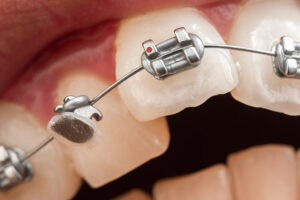Ever found yourself wondering exactly what an orthodontist does? Sure, you might think it’s just about straightening a few teeth here and there, but there’s a whole lot more that goes on behind those clinic doors. In a world where your smile is one of your most visible assets, understanding the magic behind orthodontic care is not just fascinating; it’s essential. And that’s precisely what we’re diving into today.
At the heart of this exploration is the expertise offered by professionals like those at A Winning Smile Orthodontics, where transforming smiles is all in a day’s work. But what exactly makes an orthodontist the go-to expert for these transformations? Is it just about handing out braces like candy, or is there more to the story?
Join us as we unravel the mysteries of the orthodontic world, shedding light on what an orthodontist really does and how their work can impact not just your smile, but your overall well-being. Whether you’re considering orthodontic treatment or just curious about the profession, you’re in the right place to learn about the critical role these specialists play in dental health.
What is an Orthodontist?
An orthodontist is a bit like a magician for your mouth, but instead of pulling rabbits out of hats, they’re straightening teeth and aligning jaws to bring out the best in your smile. However, unlike magicians who keep their secrets, we’re here to reveal what makes orthodontists special in the dental world.
So, what is an orthodontist? At its core, an orthodontist is a dentist who’s taken a deep dive into the world of alignment — teeth and jaw alignment, to be precise. After completing dental school, these dedicated professionals embark on an additional two to three years of specialized training focused entirely on orthodontics. This extra schooling is where they master the art of diagnosing, preventing, and treating dental and facial irregularities.
Orthodontists are the architects of smiles. They use their expertise to create a blueprint for your mouth that ensures each tooth is in the right place for both aesthetic appeal and optimal function. Their toolkits include braces, Invisalign, retainers, and other devices designed to guide teeth and jaw bones into harmony.
But it’s not just about the gear. Orthodontists have a keen understanding of facial growth and dental development, making them the go-to experts for anyone needing adjustments to their bite or alignment. Whether you’re a kid, a teen, or an adult, an orthodontist can map out a treatment plan tailored just for you, ensuring that your smile is as healthy as it is beautiful.
In short, an orthodontist does a lot more than just straighten teeth. They improve your oral health, enhance your appearance, and can boost your confidence by transforming your smile. And with the precise training and specialized skills they bring to the dental chair, they’re equipped to tackle everything from the simplest to the most complex orthodontic challenges.
The Role of an Orthodontist
Diving deeper into the world of orthodontics, let’s explore the multifaceted role of an orthodontist. It’s not just about getting those pearly whites in a neat row; it’s about crafting a harmonious balance between function and aesthetics, ensuring your smile is not only beautiful but also healthy and functional.
Diagnosis and Treatment Planning
The journey with an orthodontist often begins with a thorough diagnosis. Using a combination of visual examination, dental X-rays, and 3D imaging, orthodontists get a clear picture of your dental structure. This allows them to craft a detailed treatment plan that addresses both visible issues and underlying concerns, ensuring a holistic approach to your oral health.
Correcting Misalignments
At the heart of what an orthodontist does is correcting misalignments in teeth and jaws. Whether it’s overcrowded teeth, gaps, overbites, underbites, or other malocclusions, orthodontists employ various tools and technologies, from traditional braces to cutting-edge clear aligners like Invisalign, to gently guide your teeth into their optimal positions.
Preventing Future Issues
Orthodontists also play a crucial role in prevention. By aligning the teeth and jaws, they help prevent future dental issues, such as uneven wear of tooth enamel, difficulties in chewing or speaking, and even TMJ disorders. Early intervention, especially in children and teenagers, can often simplify or eliminate the need for more extensive orthodontic treatments later in life.
Personalized Care and Maintenance
Orthodontic treatment is highly personalized, with care plans tailored to meet the unique needs and goals of each patient. Orthodontists monitor progress closely, making adjustments as needed and guiding patients through the maintenance of their new smiles. Post-treatment care, including the use of retainers to keep teeth in place, is just as critical as the initial alignment work.
Education and Collaboration
Beyond the technical aspects of their work, orthodontists serve as educators and collaborators. They empower patients with the knowledge to maintain their oral health during and after treatment and collaborate with other dental professionals to ensure comprehensive care. This holistic approach supports not just the aesthetics of a beautiful smile but also the overall well-being of their patients.
In essence, the role of an orthodontist extends far beyond what meets the eye. It’s a blend of art and science, requiring a deep understanding of dental anatomy, facial aesthetics, and biomechanics. Orthodontists don’t just straighten teeth; they enhance lives by boosting confidence, improving oral health, and crafting smiles that are as functional as they are beautiful.
Common Treatments Performed by Orthodontists
Orthodontists are like the sculptors of the dental world, meticulously working to ensure that every tooth is perfectly positioned for a masterpiece smile. Their toolkit is vast and varied, allowing them to tackle a wide range of dental dilemmas. Let’s explore some of the common treatments performed by these specialists:
- Traditional Metal Braces: The classic treatment that comes to mind for most people when they think of orthodontics. Metal braces consist of brackets attached to each tooth, connected by wires. They’re highly effective for correcting complex alignment and bite issues, and modern advancements have made them smaller, more comfortable, and even stylish with color options.
- Ceramic Braces: For those looking for a less noticeable option, ceramic braces offer the effectiveness of traditional braces with a subtler appearance. The brackets are made of clear or tooth-colored ceramic, blending in with the teeth. They’re popular among adults and teens who prioritize aesthetics during treatment.
- Invisalign Clear Aligners: A game-changer in orthodontics, Invisalign uses a series of custom-made, clear plastic aligners to gradually move teeth into place. They’re virtually invisible, removable for eating and cleaning, and ideal for patients with mild to moderate alignment issues who prefer a discreet treatment option.
- Lingual Braces: Attached to the backside of the teeth, lingual braces are completely hidden from view, offering an aesthetic solution for patients. They can be customized to fit the unique shape of each tooth, making them an effective option for a wide variety of orthodontic needs, though they may require an adjustment period for comfort and speech.
- Palatal Expanders: Used primarily in children and adolescents, palatal expanders widen the upper jaw to correct bite discrepancies and make room for crowded teeth. This treatment can prevent the need for tooth extractions and more invasive procedures later on.
- Retainers: After the active phase of orthodontic treatment, retainers are essential for maintaining the results. Whether fixed or removable, they ensure that teeth stay in their new positions while the mouth continues to grow and adjust.
Each of these treatments comes with its own set of advantages, considerations, and suitability for different orthodontic issues. The choice of treatment depends on several factors, including the complexity of the case, the patient’s lifestyle, and aesthetic preferences. Orthodontists like those at A Winning Smile Orthodontics are skilled in evaluating these factors, guiding patients toward the option that best meets their needs and goals, and ensuring a smooth journey to a confident, beautiful smile.
The Importance of Choosing the Right Orthodontist
Choosing the right orthodontist is a decision that goes beyond just selecting someone to straighten your teeth. It’s about finding a trusted partner who will guide you through a journey that not only transforms your smile but also plays a crucial role in your overall oral health. Here’s why making the right choice is so important:
- Expertise and Experience: Orthodontics is a blend of science and art. The right orthodontist brings a wealth of expertise and experience to the table, ensuring your treatment plan is not just effective but also tailored to your unique needs. They can navigate the complexities of dental anatomy with precision, predicting how changes will affect your overall facial aesthetics and function.
- Personalized Care: Every smile is different, and so is every orthodontic treatment journey. The best orthodontists take the time to understand your specific concerns, needs, and goals. They offer personalized care that goes beyond the teeth, considering your lifestyle, preferences, and even your anxieties about dental work to make the experience as comfortable and rewarding as possible.
- Advanced Technology: Orthodontic treatments have come a long way, thanks to advancements in technology. Choosing an orthodontist who invests in the latest tools and techniques means you’re getting the most efficient, comfortable, and effective treatment options available, from 3D imaging for precise diagnostics to cutting-edge appliances that reduce treatment time and improve outcomes.
- Supportive Environment: A great orthodontic practice provides a supportive, welcoming environment where you feel valued and cared for. The right orthodontist and their team will make you feel at ease from the moment you walk in, offering clear communication, empathy, and reassurance throughout your treatment journey.
- Long-term Relationship: Orthodontic treatment is not a quick fix; it’s a journey that often spans several months or even years. Choosing the right orthodontist means establishing a long-term relationship built on trust and mutual respect. This relationship is crucial for ensuring continuity of care, making adjustments as needed, and maintaining your beautiful results long after the braces come off.
In essence, the right orthodontist can make all the difference in your treatment experience and outcomes. They provide the expertise, personalized care, and supportive environment needed to transform your smile with confidence. When considering orthodontic treatment, take the time to research, ask questions, and consult with potential orthodontists to find the perfect fit for you and your smile goals.
Conclusion
In wrapping up our dive into orthodontics, it’s evident that orthodontists do far more than straighten teeth. They enhance your oral health and self-confidence, profoundly impacting your overall quality of life. Choosing the right orthodontist is a pivotal decision, requiring you to find a professional who blends technical skill with personalized care and advanced technology, ensuring a comfortable and effective treatment journey.
Remember, your choice of orthodontist should reflect a partnership, built on trust and a mutual vision for your smile’s future. The journey to a perfect smile is significant, not just for its aesthetic benefits but for the lasting improvement in your oral health and confidence. With careful selection and a commitment to your treatment, achieving your best smile can be a transformative and enriching experience.






